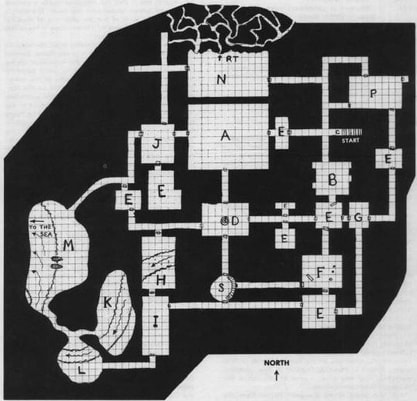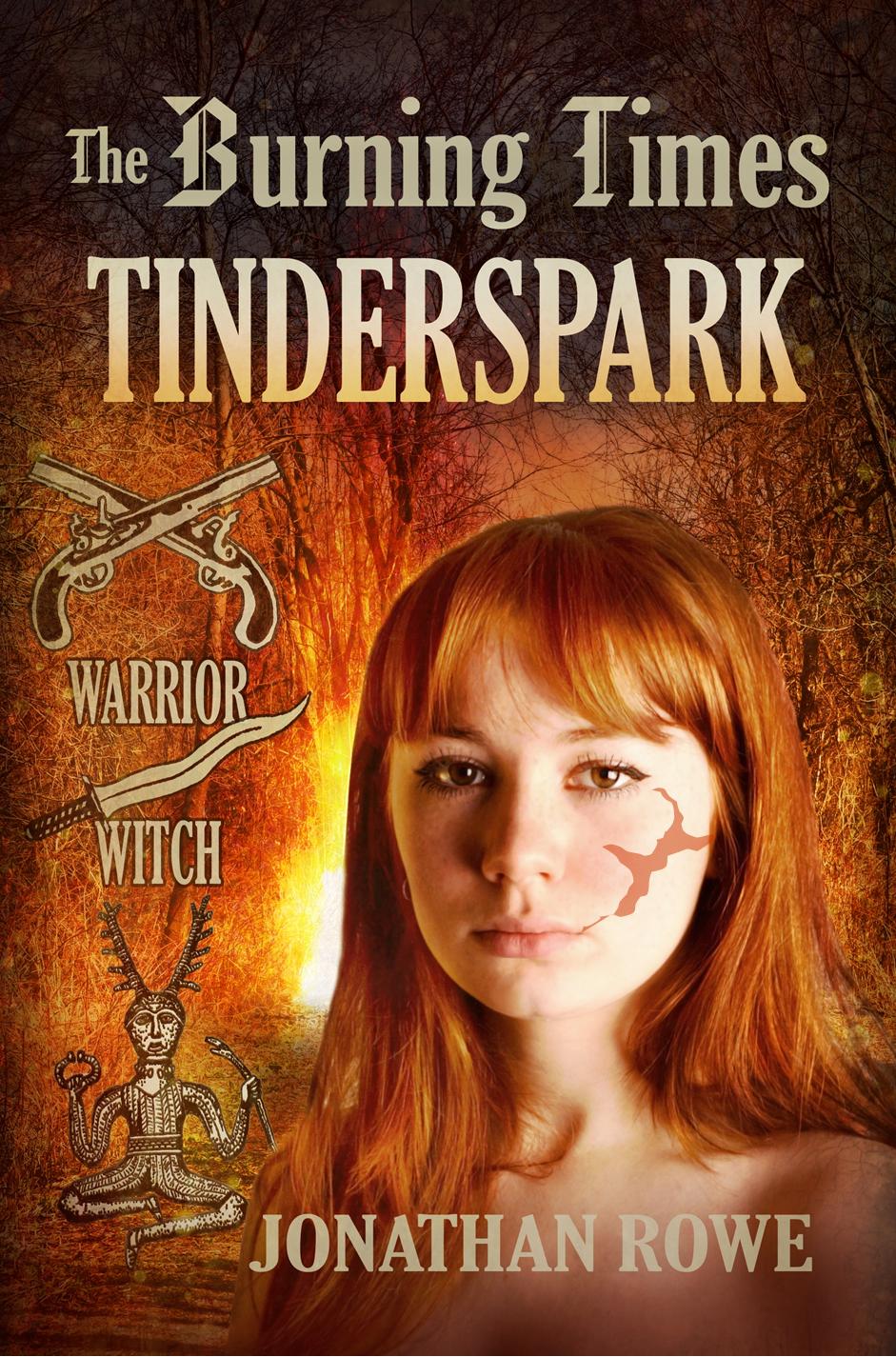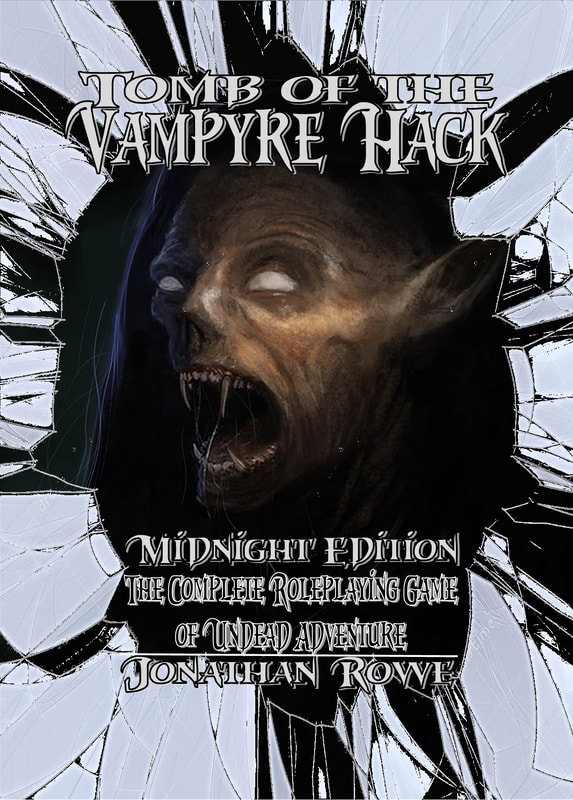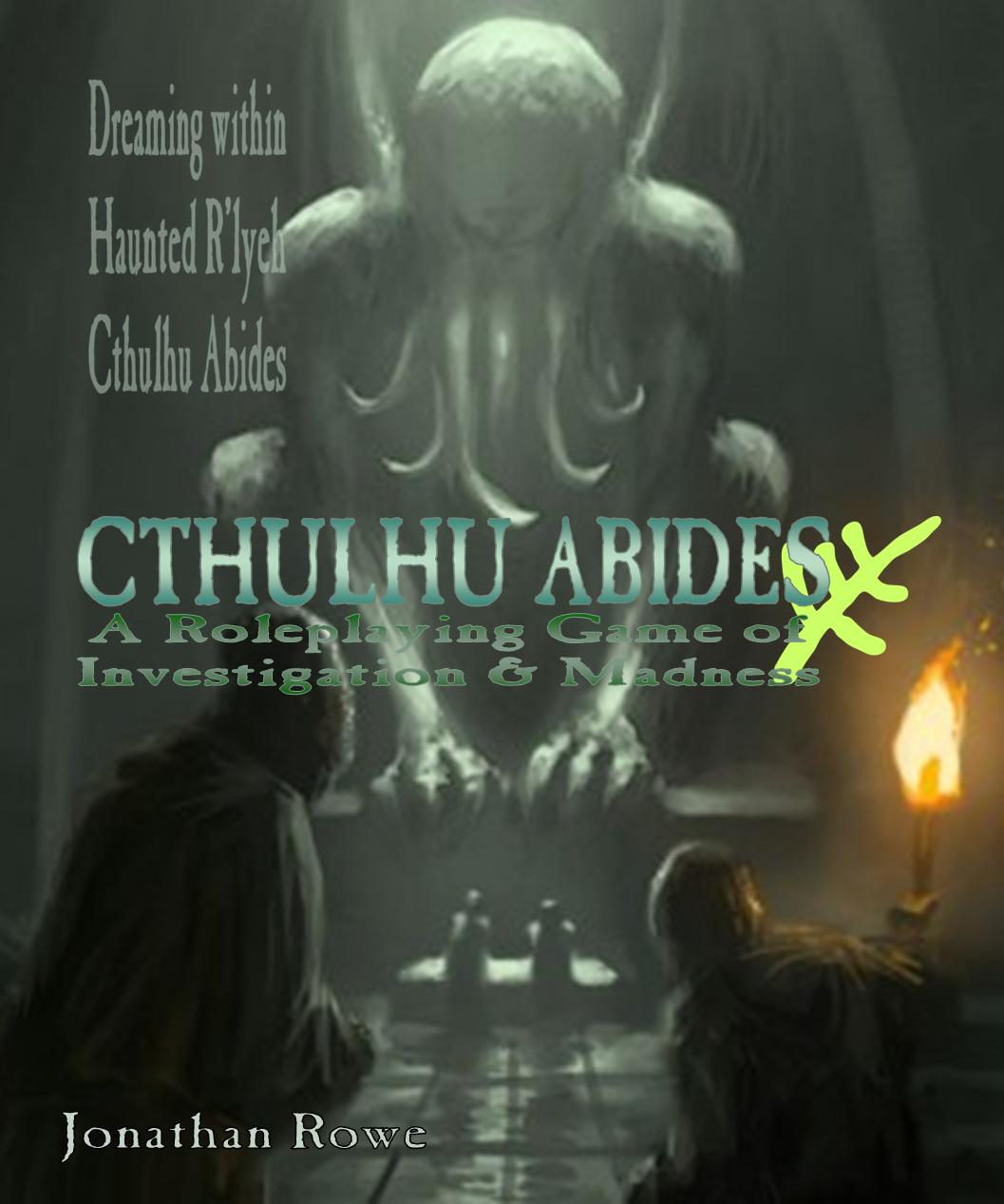|
Michael Thomas' Blueholme Prentice RPG introduced Eric Holmes' 1977 Basic D&D rules to a new audience. His Blueholme Journeymanne positions the game as a serious retroclone contender, muscling up against White Box and Delving Deeper for the title of 'Heir to Seventies D&D.'. The last blog reviewed these two: Blueholme Prentice for 1st-3rd level PCs; Blueholme Journeymanne for up to 20th level. Click the images for drivethrurpg links. Blueholme has an advantage over its competitors. They have to draw something coherent out of the jumble of Original D&D materials, picking and choosing their rules and supplementary material and trying to give it a character of its own (I feel White Box succeeds at this; Delving Deeper less so). Blueholme is channeling one man's singular vision of D&D. It has distinctiveness built-in. The trick is to reveal it. The solution is an introductory scenario. So welcome to THE NECROPOLIS OF NUROMEN, Blueholme's first module for starting characters. The contender: Michael Thomas' Necropolis of Nuromen (click image for link to download). The reigning champ: Eric Holmes' Ruined Tower of Zenopus from the 1977 Basic D&D Rules Set. The brief for this is a tough one. Of course, it has to be an excellent dungeon-crawl that will challenge and intrigue experienced players paddling at the shallow end with first level characters but also work well for newcomers. More than that, it has to showcase what's special about Blueholme: how does this version of OSR roleplaying help tell stories that the others don't? The scenario has a collaborative history, emerging from Justin Becker's 'Forbidden Mazes of the Jennerak' campaign, which is being adapted by Michael Thomas into a 3-part scenario series, of which this is the first. This gives context to some criticisms I make later. That Cover Leaf through Blueholme Prentice and you'll see that Michael Thomas has a gift for sourcing public domain art with a fantasy vibe. The cover here looks like an Ayleid Ruin from Elder Scrolls IV, but it's a piece of stunning Romantic art by Caspar David Friedrich, a 19th century German landscape painter with a taste for the spinetingling. He's best known for that one where the chap stands with his back to you on a mountain top, looking down on the clouds. Monastery Ruins in the Snow (1819) - which is going on ALL my Christmas cards from now on - and Wanderer Above the Sea of Fog (1818) which seems to be a painting about both nature AND humanity. Friedrich's landscapes defy improvement (that sky!!!) but Michael Thomas gives the whole thing an eerie blue tint, because branding, right? It's a great cover that sets the tone for his game. The Setting The scenario is only 20 pages long, but Thomas devotes the first 4 pages to the setting. This is a bit of a gamble. Some people just want to wrench dungeons out, bleeding, from their settings, like Molam Ram plucking out hearts for Kali. You can do that. Just skip this stuff and go straight to the dungeon. But you're missing out! Don't be this guy. The setting is a distinctive High Fantasy realm. The town of Camlann gets its own map, its mystic porcelain tower, Lady Leika of the Lily and her griffon-riding guards. There are local celebrities, rivalries and gossip. This takes the lightly-sketched idea of Portown and the Green Dragon Inn from Holmes' sample dungeon and improves on it. The Camlann setting has its own magical quality, while rooted in the earthy down-homeliness that's needed to make a journey away, out into the darkness and danger, so compelling. Outside Camlann is the Delvingwood where the local Elves are declining and the Goblins are advancing, turning the fairy forest to evil. This is an evocative setting, with more of Narnia to it than Middle-Earth. A broad grassy road, the Elfway, cuts through the woods but if you leave this highway and enter the trees, why, you're stepping into the Otherworld, crossing Joseph Campbell's Threshold for the Hero's Journey. This is all very nicely structured. Holmes' 'Zenopus' dungeon had a menace to it and Thomas parallels this. Instead of the morally-murky Zenopus, we have Nuromen who's an outright rotter. This necromancer sets up a Chaotic enclave in the woods called Law's End but his gang of villains are blasted by an unspecified catastrophe, doubtless of his own making. His underground Necropolis stands unguarded beneath a 'ghost town' in ruins with the forest advancing over it. As is standard, the PCs are greedy and ambitious dungeon raiders looking for a fortune and a name for themselves. However, Thomas adds a feature that Holmes misses. The PCs encounter the Elves on their way to the dungeon and are tasked with the recovery of a magical heirloom. This gives the players a focus and a sense of dignity to their mission: they're not just looters. Critique I really like this set-up. The tone is very effective: an elegaic sense of decline and lengthening shadows, an evil from the past, a noble mission and a wilderness journey, all set in a fairy tale kingdom with just enough darkness to it to head off sentimentality. It reminds me of the setting sketched out for Jean Wells' Module B3: Palace of the Silver Princess (1981). If Holmes drew inspiration from Robert E. Howard and Lovecraft, then the world of Justin Becker/Michael Thomas feels like it owes more to Lord Dunsany and Lloyd Alexander's Prydein Chronicles. The downside is that this material is not well laid-out. The text starts with the description of Nuromen's downfall, then outlines the geography of the forest, then the set-up in Camlann. There are NPCs and Rumours in Camlann, then back into the Forest we go, with Wilderness Wandering Monster Tables for on and off the Elfway landing us back in the Ruins of Law's End and the abandoned Necropolis. It's an odd structure, involving repetition and redundancy while also allowing you to forget or muddle important material. A bit of editing would help here: Camlann > Elfway > Delvingwood Forest > Law's End/Necropolis is the structure that GMs need. It's a shame that this background material is (slightly) impenetrable, since it encourages careless readers to skip it. A lot of thought has gone into offering low level characters a wilderness journey with real dangers but balanced encounters and a metric ton of theme. Jeff Jones' Dunsany-inspired art also captures the world Thomas is exploring The Dungeon The dungeon is a two-level affair, but it's built to an epic scale. The party have to drop down into a vast shaft - 50ft across and 100ft deep - using ropes that a squad of Goblins have left behind. Deep underground, the PCs move through corridors and chambers carved out of the limestone crag. Holmes' dungeon evoked suffocating darkness, opening out into immense, echoing chambers; Thomas' Necropolis is different, it has an eerie but sinister beauty in its carved murals and looming doorways. There are 20 rooms on the First Level, 6 of them empty and the rest more often interesting than dangerous. A gigantic subterranean courtyard offers a safe hub that the party can branch out from in their explorations. Most of the traps can be avoided with forethought. There are ghosts and illusions and remnants of Nuromen's old spells. Aside from the Goblin raiders, the monsters are largely dungeon pests and mindless undead, but the Big Bad on this level is a nest of Harpies who could easily overwhelm an incautious party. There's treasure to collect but not much: a couple of thousand GP total, so no one is levelling up by clearing this out. There are magical items to pick up, especially for Magic-Users. The highlight of the First Level is the study and workshops of Nuromen himself. There are lots of things for players to tinker with and surmise, plus a few windows into the dead wizard's psyche and rewards for players who can figure out what motivated the old villain. Unlike the opaque figure of Zenopus, Nuromen is present here in spirit if not in body. There are signs of his handiwork everywhere. If the First Level is a slow-paced investigation into long-dead mysteries, down on Level Two things take a turn for the weird and the wonderful. There are 15 rooms, but only 3 are empty, so it's more densely packed and more unforgiving. There are nastier traps (an over-reliance on poison, which I hate!), riddles, some quirky magic items and chilling scenes of evil occultism. Troglodytes will give first level characters a run for their money. The climax comes when the party access Nuromen's Tomb and go up against Nuromen himself, now a very dangerous undead antagonist. The treasure here is stupendous, so survivors are definitely leveling up. Critique The dungeon is beautifully structured, offering players radiating spokes to explore on the First Level while the Second Level funnels them towards an inevitable showdown with Undead Evil. The maps look lovely. They are all tucked at the back, after the OGL pages, which confused me at first. It would be nice if the maps appeared alongside the room keys, making it easy to read off the screen/page and hold a picture of the layout in your mind as you do. Similarly, there's a lot of high quality description, but it's usually mixed in with exposition and mechanics. The Dungeon Key would benefit from introductory descriptive paragraphs for each location: something the GM can read aloud, providing all the visual detail for players, with the GM-only material underneath. It's a pity that the Rumours back at Camlann don't help the players make more sense of what they encounter in the Necropolis. For example, there's Robin the Thief, now turned into a riddling Ghoul and guarding some of Nuromen's treasure. How much better for the PCs to hear the tale of Robin's hideous fate back in Camlann, then recall it here, rather than the GM having to info-dump for Thieves in the party. Other snippets about the Cult of Gamosh and Nuromen's wife and child would make helpful Rumours too. The stinginess of treasures is a problem. Blueholme sets its XP rewards for killing monsters quite low and, in any event, there's not that much combat to be had. It's desirable that at least some of the party be second level by the time they go up against Nuromen. If (say) the Thieves and Clerics are going to get to second level, then a party of 4 needs to earn over 5,000 XP. There just aren't enough combat encounters or valuable treasures to do this. I think doubling the treasure rewards in the dungeon and halving the size of the big hoard in room 25 could result in a party of mixed 1st/2nd level characters going up against Nuromen at the climax. Some of those second level characters will probably lose a level in the fight. 'Nuff said. Alternatively, instead of placing the key to the treasure chamber (25) around the undead necromancer's neck, it could be found instead upstairs in his chambers (12 or 13), perhaps with a map indicating the presence of a secret vault, reached through the caves on the lower level (18). This would allow canny players to access the treasure before they run into Nuromen himself: flight is then the prudent choice. Certainly, when the PCs emerge blinking from the Necropolis at the end, they will feel that they have earned their spurs. More Caspar David Friedrich: Evening (1820-1) makes a great image for the faerie Delvingwoods Epilogue: Bandits, grr-rrr The scenario doesn't end there. Back in Camlann, bandits are up to no good. A breakaway faction of the outlawed White Company is kidnapping merchants. Tracking them back to their cave lair is in order, then bloody retribution. This is a welcome epilogue. The Dungeon itself was mostly investigation, mystery and puzzles, with just a handful of combats, the latter ones very stressful. Some players might be in the mood for uncomplicated monster-bashing as a way to unwind, especially if everyone is second level now. Bandits make great punchbags. Well, guess again. The Bandits all have 6hp, so they're surprisingly resilient. Their boss, Lothar, is a 6th level fighter, also with above-average HP, and he's got half a dozen Gnolls backing him up. There's an Owl Bear in there! The good news is that Lothar is sitting on a hoard that should get all the survivors up to third level. However, his treasure is the only loot in this place, so if the Bandits send the adventurers away with their tails between their legs, they'll have nothing to show for the adventure but bruises. Critique This section of the adventure feels undercooked. The Bandits are well-organised in defense of their lair, but there's no option but to slog through them. Lothar is supposed to be defying the Bandit Prince who leads the White Company. It would be helpful if some of the Bandits were loyalists who would turn against Lothar. There's a prison pit, crying out for a prisoner to occupy it, a useful NPC who knows the caverns and could guide the PCs. As it stands, this side-quest is a brutal skirmish that will probably overwhelm second level characters and doesn't offer much to reward experienced players who want to try more devious or diplomatic strategies. Of course, the party don't have to take on Lothar. They could just rescue the merchants and claim a modest reward. But c'mon now, is that what HEROES do? Michael Thomas confirms his intention that PCs do NOT fight Lothar to the death, but instead try to capture Bandits for the reward (50gp a head!). Blueholme doesn't provide any mechanism for subduing enemies nor does the scenario suggest one, but here's a thought. The GM could rule that, with any group of Bandits, once half are dead, the other half surrender. This makes skirmishing in the caves easier and more lucrative. Alternatively (or additionally) a force of 2d6 1st level Fighters from the Camlann Constabulary could bolster the PCs in the final showdown with Lothar - and Lothar could surrender once he has lost half his Hit Points. Can't get enough Caspar: Cairn in the Snow (1807) is great for the entrance to Lothar's Lair Final Thoughts This is a deeply atmospheric dungeon in a great High Fantasy setting. It's got a distinctive mystical vibe to it that takes its cues from Eric Holmes. It's clearly a Blueholme Dungeon and it promotes its brand. The Dungeon is structured around exploring and investigating rather than fighting. There are treasure troves to pick up but not enough to level up. The massive hoard at the end (should it be found) will level everyone up, perhaps placing Thieves at third level. That feels 'off' - especially considering the climactic battle the players have to endure to get the key. It's tempting to dial back the danger (Nuromen would be quite deadly enough as a Ghoul or a Wight) or shift some of the loot out of the hoard or put the key elsewhere in the dungeon; that way, PCs could retreat to their camp, level up, then descend to vanquish Nuromen or run away from the encounter with him. The problem is even more pronounced in the Lothar epilogue. Lothar's hoard exceeds 10,000gp, so half a dozen PCs could level up from that, but he's 6th level and protected by Gnolls! Part of the charm of Blueholme Prentice is its third level 'ceiling'. Why can't Lothar be a really nasty 3rd level Fighter? Couldn't his loot be scattered throughout the lair so that PCs can pick some of it up during other skirmishes? Alternatively, rules are needed for capturing and subduing the Bandits rather than battling them to the death. These aren't damning criticisms. It's easy to adjust treasure and threat, based on how quickly you envisage the PCs progressing through the levels and how many need to die doing so. GMs will need to make their own minds up about what they expect players to accomplish and whether The Necropolis of Nuromen is supposed to end in hard-won victory, tactical retreat with riches or an ignominious death. However, set all that aside. The scenario has much greater strengths. The journey down the Elfway, into the Delvingwood and then deep down below ground, into the vaults of the Necropolis: this is a deeply memorable start to anyone's campaign and a calling card for Blueholme as an RPG with a distinctive style. Michael Thomas is working on a new scenario that will function as "a real introductory adventure" to Blueholme (rather than just being a low-level adventure): The Shrine of Sobek should be out next year but I hope The Necropolis of Nuromen gets its sequels too.
1 Comment
I greatly enjoyed your review.
Reply
Leave a Reply. |
30 Minute Dungeons
Essays on Forge
FORGE Reviews
OSR REVIEWS
White Box
THROUGH THE Hedgerow
Fen Orc
I'm a teacher and a writer and I love board games and RPGs. I got into D&D back in the '70s with Eric Holmes' 'Blue Book' set and I've started writing my own OSR-inspired games - as well as fantasy and supernatural fiction.. Archives
July 2024
Categories
All
|












 RSS Feed
RSS Feed
























